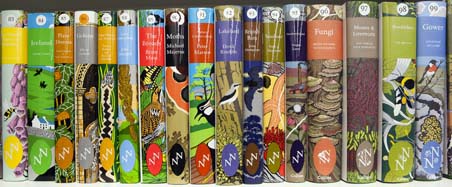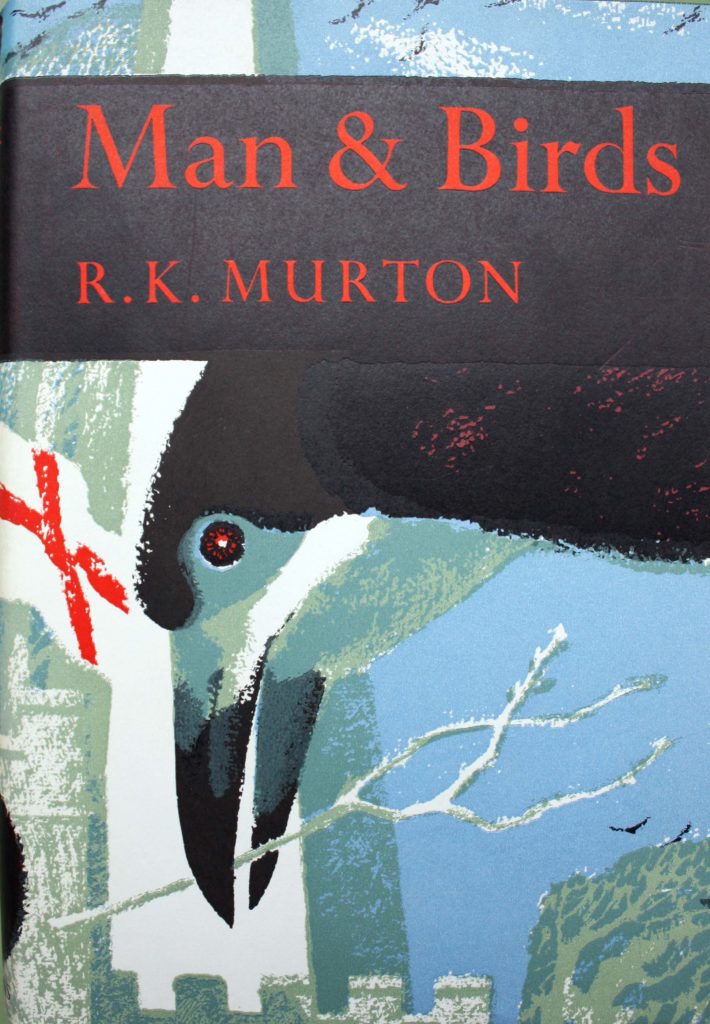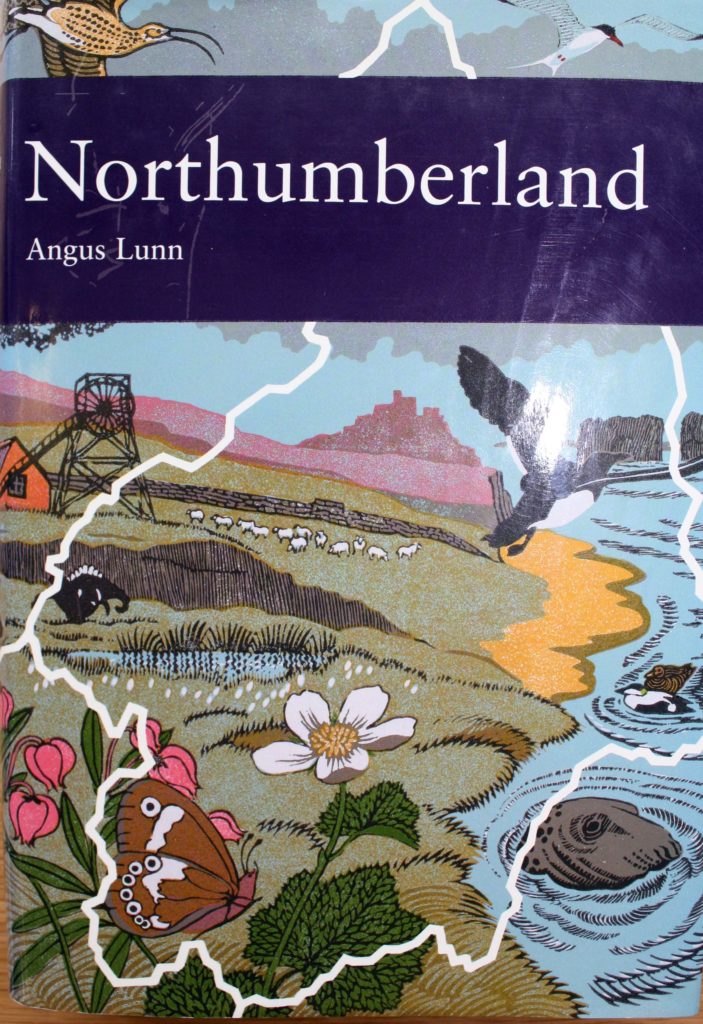Hello, My name is Brian Allen and I am a Volunteer at the Great North Museum: Hancock Library.
When you visit the Great North Museum: Hancock allow time to discover the library if you have not already done so. It is not exactly a secret but it is not as well-known as it deserves to be. Here are collections belonging to the Natural History Society of Northumbria (NHSN) as well as the Society of Antiquaries of Newcastle upon Tyne and the Cowen Collection of Newcastle University’s School of History, Classics and Archaeology.
On your first visit it is probably best to take the lift to the second floor and there is the library immediately on your left! Step inside and one of the most eye catching sections is soon to be seen on your right. It is the complete set of the Collins New Naturalist Series with their outstanding dust jackets.

The New Naturalist series is published by Collins on a variety of natural history topics relevant to the British Isles. The aim of the series at the start was “to interest the general reader in the wild life of Britain by recapturing the inquiring spirit of the old naturalists.” This highly prized collection began being published in 1945 when the first in the series was E. B. Ford’s “Butterflies”. The most recent addition, “Gulls” by John C Coulson, was published in April this year as number 139 in the series. The complete set including twenty two monographs are for reference only and can be enjoyed in the library by everyone. There are some duplicate copies available for members of the Natural History Society of Northumbria to borrow on presentation of their membership card.
From the outset the editors believed that the British public’s natural pride in our native fauna and flora, as well as concern for conservation, would be best fostered by presenting the results of modern scientific research with a consistently high standard of accuracy and clarity.
The Old Naturalists
The new naturalists were and are experts in their chosen field and mainly scientists but who were the old naturalists and what remains of their observations and writings?
You might think of Gilbert White and his “The Natural History of Selborne” (in east Hampshire) as an example of an old naturalist in this context. However, there are many examples more local to our region. Northumberland was the first county to be covered in the New Naturalist series when local naturalist Angus Lunn’s book was published in 2004. The editor’s preface refers to some of the region’s old naturalists including the 16th century William Turner, the 18th century John Wallis, Nathaniel Winch and Thomas Bewick both spanning the 18th and 19th centuries, Prideaux John Selby and John Hancock both of the 19th century, and Abel Chapman and George Bolam spanning the 19th and 20th centuries. The NHSN has some fine examples of the work of these “old” naturalists in the library’s valuable restricted access collection and archives available to readers on request. I will be working on a future blog about this topic.
All the old naturalists cited above are men. Out of nearly 200 New Naturalist authors and co-authors only 7, that is less than 4%, are women.
Topics covered by the New Naturalist Series
A wide range of topics dealing with large groups of animals and plants have already been covered in this globally significant series. Sitting alongside it, or more accurately in our library beneath it is the smaller monograph series which focuses on an individual species or group of species, mainly but not exclusively birds. In the editors’ preface to a 1952 monograph they write “An object of the New Naturalist series is the recognition of the many-sidedness of British natural history, and the encouragement of unusual and original developments of its forgotten or neglected facets.” There have been no additions to the Monographs since 1971.
Art work dust jackets
One distinctive feature that makes this collection so attractive is the design of the dust jackets. For many years these distinctive designs were created by a couple, Clifford and Rosemary Ellis identified in their work as C & R E. They used offset lithography, a technique in which they were very skilled. Their designs were regarded as works of art in their own right so experienced art printers were employed rather than the House of Collins despite it being a printer as well as a publisher.

Later designs from 1985 are by Robert Gillmor, known to many for his characteristic bird illustrations. He too worked closely with experienced art printers initially using much the same technique as C & R E had. He changed later to using linocuts to increase the colours’ vibrancy. Eventually the printers wanted “camera ready artwork” and the printing took place in Thailand. No longer could the artist work with the printers to the same effect.
Robert Gillmor first experienced the changes in 2004 with the design for Angus Lunn’s Northumberland (Number 95 in the series). He describes the experience in “The Art of the New Naturalists” (Marren & Gillmor, Collins 2009) when the county outline was misplaced by 4mm to the right leaving a line cutting through the seal’s head, covering some of the wing of the butterfly and obliterating the head of a blackcock. He was not happy! He had already revised his design to reduce the number of birds featured which meant removing a prominent image of a ring ouzel. The final version is designed to show the diverse features of the county’s landscape, with its flora and fauna all connected by the outline of the county. My own paperback copy has a photograph of a rural landscape without any fauna on its cover!

The series continues to be published with forthcoming titles to include “Garden Birds” and “Pembrokeshire”. It will be interesting to see just how the 75th anniversary of this unique series will be marked in 2020. What might the topics be and will there be more women naturalists amongst the authors?
There is an increasing sense of crisis amongst conservationists and naturalists given the impact of climate change on the planet and all its inhabitants. David Attenborough, amongst others, has highlighted the pressing issues. Extinction Rebellion is a growing movement globally and the sixteen year old Swedish school student, Greta Thunberg, has been powerfully prominent and eloquent on the international stage, too. Will a newer breed yet of New Naturalists, female and male, emerge in this climate?
The Great North Museum: Hancock Library is free to use and is open to everyone. It is located on the second floor of the Museum. Further information can be found at https://greatnorthmuseum.org.uk/collections/library-and-archives
One Response to The New Naturalists – A Guest Post by Brian Allen